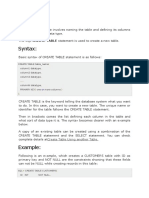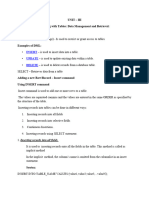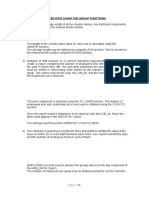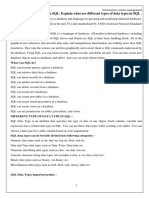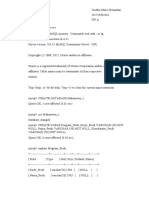0% found this document useful (0 votes)
13 views19 pagesSQL Basic Statment Notes
This document provides an overview of SQL basics using Oracle 23, including data types, table creation, and common SQL commands such as INSERT, SELECT, and DELETE. It explains the differences between CHAR and VARCHAR2 data types, the syntax for creating and dropping tables, and how to use the WHERE clause for filtering results. Examples are provided to illustrate the usage of each command and data type.
Uploaded by
232840Copyright
© © All Rights Reserved
We take content rights seriously. If you suspect this is your content, claim it here.
Available Formats
Download as PDF, TXT or read online on Scribd
0% found this document useful (0 votes)
13 views19 pagesSQL Basic Statment Notes
This document provides an overview of SQL basics using Oracle 23, including data types, table creation, and common SQL commands such as INSERT, SELECT, and DELETE. It explains the differences between CHAR and VARCHAR2 data types, the syntax for creating and dropping tables, and how to use the WHERE clause for filtering results. Examples are provided to illustrate the usage of each command and data type.
Uploaded by
232840Copyright
© © All Rights Reserved
We take content rights seriously. If you suspect this is your content, claim it here.
Available Formats
Download as PDF, TXT or read online on Scribd
/ 19


